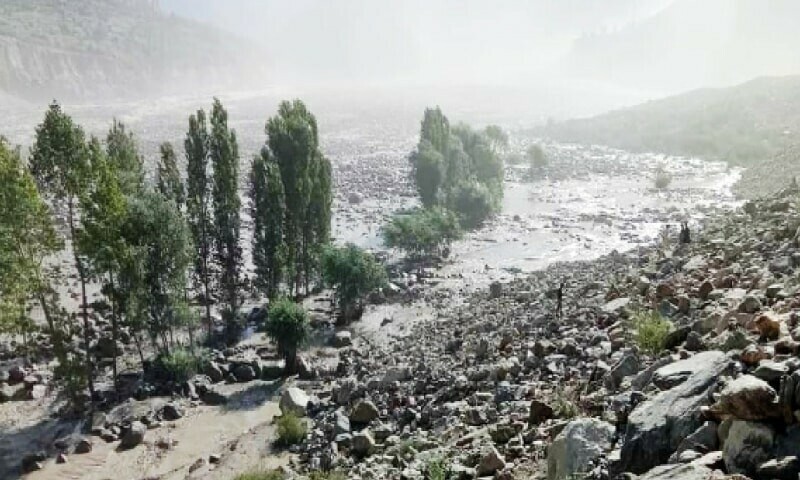It was a scene of chaos and devastation as extreme weather wreaked havoc in Punjab and Gilgit-Baltistan. Record-high temperatures in Gilgit-Baltistan accelerated the melting of glaciers, causing heavy flooding in various districts. The rapid melting of ice led to glacier lake outburst floods, blocking roads, damaging homes, and leaving people stranded across the region.
The Gilgit-Baltistan Disaster Management Authority (GBDMA) reported unusually high temperatures across the region, particularly in Diamer and Gilgit. The soaring temperatures have increased the risk of flooding in rivers and streams. Last week, Chilas recorded a scorching 48.5°C, the highest since 1997, while Bunji saw temperatures soar to 46.1°C, the highest since 1971. The water levels in rivers and streams rose dangerously due to inflows from rapidly melting glaciers, causing flash floods that blocked essential highways like the Karakoram Highway.
The flooding wreaked havoc across the region, damaging agricultural land, vegetation, irrigation infrastructure, and blocking access to various valleys and villages. The GBDMA swiftly mobilized machinery to reopen blocked roads and ensure the safety of affected communities. Efforts were also focused on restoring irrigation channels vital for the region’s agricultural livelihood.
The GBDMA is now looking to understand the scientific reasoning behind glacier melting to better predict and mitigate future flooding events. The Space and Upper Atmosphere Research Commission has been called upon to provide monitoring equipment for glaciers.
In Punjab, heavy monsoon rainfall triggered urban flooding in several cities, including Lahore. The downpour overwhelmed drainage systems, causing waterlogging in various areas and necessitating the deployment of pumps to drain the inundated regions. The Punjab government has put all disaster response agencies on high alert as the province braces for above-average rainfall in the coming days.
Local authorities have sprung into action, establishing relief camps, reinforcing electricity poles, and mobilizing special teams to safeguard livestock in rural areas. With heavy rain expected to continue, disaster response agencies are working tirelessly to protect lives and property from the deluge.
The authorities have issued warnings, urging people to avoid unnecessary travel, report flooding promptly, and take necessary precautions to stay safe during the inclement weather.
As the regions grapple with the aftermath of extreme heat and rainfall, the importance of proactive disaster management and climate resilience measures is underscored. The need for continuous monitoring of environmental changes, early warning systems, and coordinated response efforts is paramount in mitigating the impact of such extreme weather events.
In conclusion, the recent floods in Punjab and Gilgit-Baltistan serve as a stark reminder of the increasing vulnerability of communities to climate-related disasters. It is imperative for governments, authorities, and communities to work together to build resilience, adapt to changing climatic patterns, and ensure the safety and well-being of all citizens in the face of such challenges.









Leave feedback about this